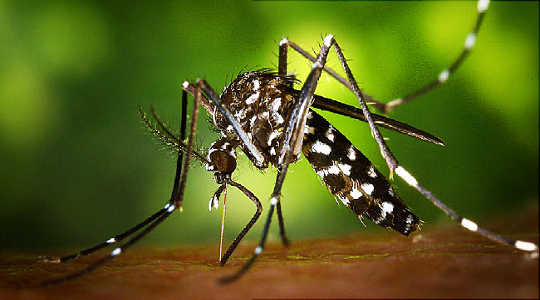
More cities than previously assumed could soon be grappling with Zika virus if two species of mosquitos are found to be equally effective carriers of the disease. A new interactive map shows the relative risk for 100 cities worldwide, including many US locations.
Even if only one mosquito species proves capable of spreading Zika, the scientists say cities such as Miami and Houston are at high risk of seeing more of the disease this summer.
“Among urban areas in the US, Miami and Houston are at the greatest risk.”
For a new study, published in the Lancet Infectious Diseases, researchers mapped how Zika is likely to spread in 100 cities worldwide under two different scenarios, taking into account air travel to and from affected areas in Latin America, and the prevalence of two common mosquito species associated with the disease.
Although both mosquito species have been detected with Zika, researchers point out that only one type of mosquito is known to be effective at spreading the virus. If the second species also is capable of spreading Zika among people, more places in the United States, Europe, and Asia than previously thought will probably experience outbreaks.
“The spread depends critically on if a second mosquito species is a very good transmitter of Zika,” says Sahotra Sarkar, a faculty member in the integrative biology and philosophy departments at the University of Texas at Austin. “If it is, then the risk is even worse than what has been forecast so far.”
Public health officials with the World Health Organization (WHO) and other agencies have forecast the spread of Zika with too little information about the effectiveness of different types of mosquitos in spreading the disease, Sarkar says.
Under the first scenario, in which only one mosquito species spreads Zika, existing models significantly overestimate the danger of the Zika virus in most of the world. In the United States, for example, only Florida, Texas, and Louisiana—home to the Aedes aegypti mosquito—would probably experience widespread cases of Zika.
“Among urban areas in the US, Miami and Houston are at the greatest risk,” Sarkar says. “In general there is greater risk to Florida than Texas because more travel to Latin America and the Caribbean occurs there.”
Under the second scenario, however, in which another species—Aedes albopictus, known to harbor the disease but not yet known to be good at transmitting it—is also capable of spreading Zika, the WHO model underestimates the likelihood of transmission. Parts of the world previously believed to be at low risk—such as Canada, Chile, and many countries in Europe and Asia—would probably experience a spread in Zika.
Under this scenario within the United States, New York would face an even greater risk than Houston.
The findings came out the same day as a study from the National Center for Atmospheric Research that looked at how Zika would be likely to spread in US cities this summer. A new map points out the importance of learning immediately whether both mosquito species can effectively spread the Zika virus to ensure an appropriate public health response in different regions.
Regardless, cities such as Miami, Orlando, Houston, Tampa, and New Orleans should step up efforts to sample and monitor local mosquito populations and be prepared to implement drastic mosquito control measures, Sarkar says. And travelers to Latin America should continue to take precautions to protect themselves.
“The risk of additional Zika spread is further heightened by the upcoming 2016 Summer Olympics, which will be hosted in Rio de Janeiro, Brazil, the epicenter of the Zika virus outbreak,” says coauthor Lauren Gardner of the University of New South Wales.
Source: University of Texas at Austin
Related Book:
at InnerSelf Market and Amazon























